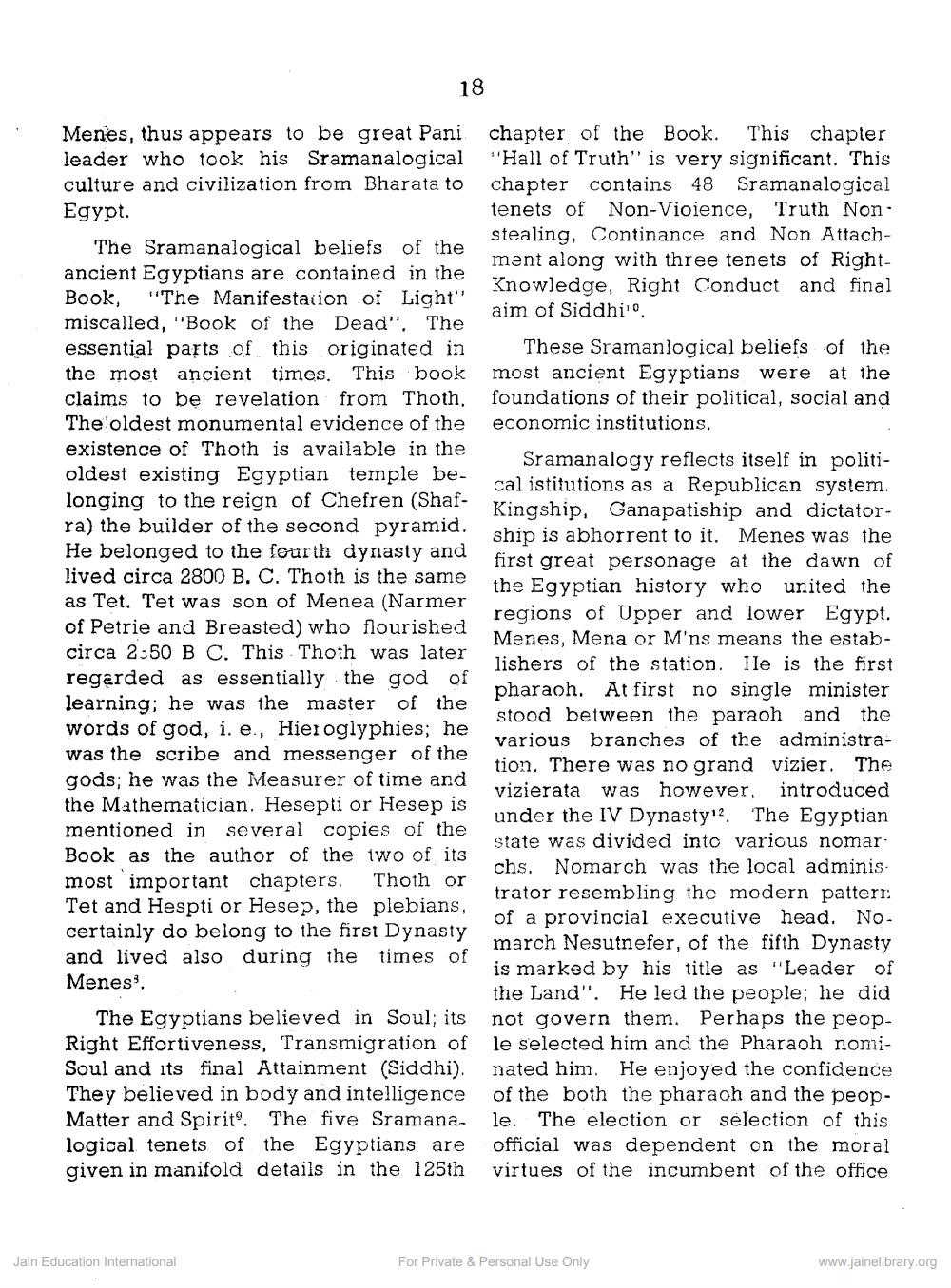________________
18
Menes, thus appears to be great Pani leader who took his Sramanalogical culture and civilization from Bharata to Egypt.
The Sramanalogical beliefs of the ancient Egyptians are contained in the Book, "The Manifestation of Light" miscalled, "Book of the Dead". The essential parts of this originated in the most ancient times. This book claims to be revelation from Thoth, The oldest monumental evidence of the existence of Thoth is available in the oldest existing Egyptian temple be
longing to the reign of Chefren (Shaf ra) the builder of the second pyramid. He belonged to the fourth dynasty and lived circa 2800 B. C. Thoth is the same as Tet. Tet was son of Menea (Narmer
Sramanalogy reflects itself in political istitutions as a Republican system. Kingship, Ganapatiship and dictatorship is abhorrent to it. Menes was the first great personage at the dawn of the Egyptian history who united the regions of Upper and lower Egypt. Menes, Mena or M'ns means the estab
of Petrie and Breasted) who flourished
circa 2:50 B C. This Thoth was later regarded as essentially the god of learning; he was the master of the words of god, i. e., Hieroglyphies; he was the scribe and messenger of the gods; he was the Measurer of time and the Mathematician. Hesepti or Hesep is mentioned in several copies of the Book as the author of the two of its most important chapters. Thoth or Tet and Hespti or Hesep, the plebians, certainly do belong to the first Dynasty
lishers of the station. He is the first pharaoh. At first no single minister stood between the paraoh and the various branches of the administration. There was no grand vizier. The vizierata was however, introduced under the IV Dynasty12. The Egyptian state was divided into various nomar chs. Nomarch was the local adminis trator resembling the modern pattern. of a provincial executive head. No. march Nesutnefer, of the fifth Dynasty
and lived also during the times of is marked by his title as "Leader of
Menes",
the Land". He led the people; he did not govern them. Perhaps the people selected him and the Pharaoh nominated him. He enjoyed the confidence of the both the pharaoh and the people. The election or selection of this official was dependent on the moral virtues of the incumbent of the office
The Egyptians believed in Soul; its Right Effortiveness, Transmigration of Soul and its final Attainment (Siddhi). They believed in body and intelligence Matter and Spirit. The five Sramanalogical tenets of the Egyptians are given in manifold details in the 125th
Jain Education International
chapter of the Book. This chapter "Hall of Truth" is very significant. This chapter contains 48 Sramanalogical tenets of Non-Violence, Truth Nonstealing, Continance and Non Attachmant along with three tenets of RightKnowledge, Right Conduct and final aim of Siddhi".
These Sramanlogical beliefs of the most ancient Egyptians were at the foundations of their political, social and economic institutions.
For Private & Personal Use Only
www.jainelibrary.org




